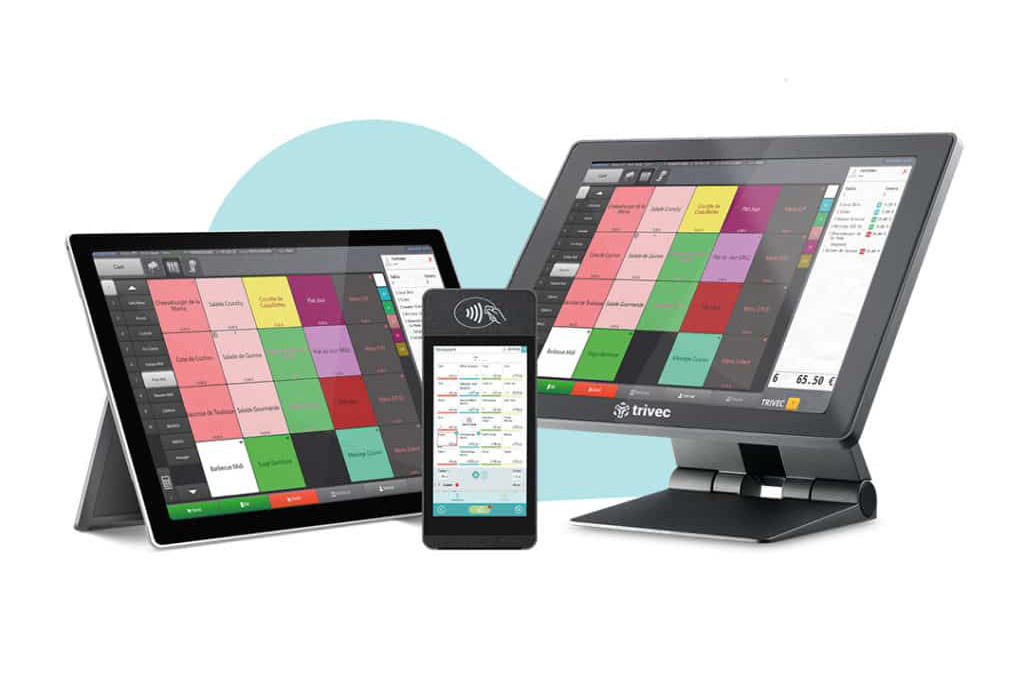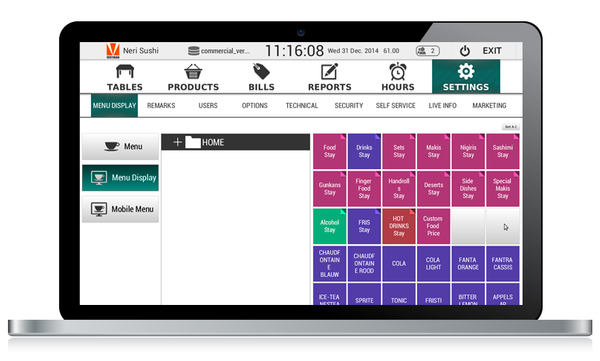Restaurant POS Software for table-side service: What to look for
Wiki Article
Exactly How POS System Functions: A Comprehensive Overview for Business Owners
A POS system acts as an essential tool for modern-day organizations, incorporating numerous parts to streamline operations. It includes hardware like barcode scanners and software program available for sale tracking. This system not only refines purchases but additionally handles supply and assesses customer behavior. Understanding its performance can significantly influence a business's effectiveness and decision-making. What are the crucial elements that add to this efficiency? Exploring these components supplies valuable insights.Recognizing the Elements of a POS System
A Factor of Sale (POS) system is composed of several vital elements that function together to assist in transactions and manage business procedures. At its core, the equipment includes tools such as a money register, barcode scanner, invoice printer, and repayment incurable, all important for refining sales (Restaurant POS Software). The software part handles inventory, sales monitoring, and consumer data, supplying important insights for service decisions.Additionally, databases keep purchase records and client info, ensuring data integrity and protection. Network connectivity makes it possible for real-time updates and access to cloud-based services, boosting functional performance. Customer interfaces, created for convenience of usage, allow staff to navigate the system swiftly, lessening training time. Together, these elements develop a natural system that enhances the sales procedure, improves consumer service, and help in reliable administration of company sources. Comprehending these components is crucial for service owners looking for to optimize their POS systemsExactly How Sales Transactions Are Refined
When a consumer makes a decision to make an acquisition, the sales purchase initiates a collection of systematic steps within the POS system. Initially, the cashier inputs the things being bought, which are checked through a barcode visitor or manually gone into. This action gets item details, consisting of prices and applicable tax obligations, from the system's database.Next, the consumer exists with the complete amount due. The POS system after that processes the payment, whether with money, credit history card, or mobile settlement techniques. For electronic payments, the POS firmly interacts with settlement cpus to authorize and verify the transaction.Once the repayment is confirmed, the system creates an invoice, which can be printed or sent electronically. This receipt offers as receipt for the customer. Finally, the deal information is videotaped in the system, making certain exact sales documents and financial monitoring for the organization.Stock Monitoring and Tracking
Efficient inventory management and monitoring are essential parts of a POS system, as they assure that companies maintain ideal supply levels and minimize inconsistencies. A robust POS system enables real-time stock updates, reflecting sales and returns immediately. This allows company owner to check stock degrees properly, making sure that prominent things are easily available while stopping overstocking of less preferred products.Additionally, advanced POS systems supply functions such as automated stock alerts and reorder suggestions, improving the purchase process. Barcoding and RFID modern technology improve precision in tracking inventory motion, decreasing human mistake. Extensive coverage devices offer insights right into inventory turn over prices, helping services make informed decisions about acquiring and item offerings. Inevitably, efficient inventory administration with a POS system not only enhances functional efficiency however additionally boosts consumer complete satisfaction by guaranteeing product schedule.
Assessing Customer Data and Insights
Client data evaluation works as an effective tool for businesses utilizing a POS system. By collecting and examining deal data, organizations can discover beneficial insights concerning client habits and choices. This evaluation allows them to determine purchasing patterns, peak buying times, and preferred products, therefore notifying stock decisions and marketing strategies.Additionally, businesses can segment their client Home Page base, enabling customized advertising efforts that accommodate particular demographics or acquiring habits. Recognizing consumer loyalty patterns likewise assists in developing targeted promos and incentives programs.The information obtained from a POS system can additionally expose understandings into consumer responses, enabling businesses to make enlightened choices pertaining to item offerings and service renovations. Inevitably, leveraging client information effectively can enhance the overall purchasing experience, foster consumer satisfaction, and drive revenue growth.
Benefits of Executing a POS System
Carrying out a POS system provides various benefits that can substantially boost company procedures. To start with, it improves transaction processes, decreasing delay times and boosting customer fulfillment. By automating sales processes, organizations can minimize human mistake and assurance exact record-keeping. Additionally, a POS system provides important information analytics, making it possible for proprietors to track sales trends and inventory published here levels in real-time. This understanding supports notified decision-making, aiding to maximize stock management and advertising strategies.Moreover, several POS systems incorporate with other business tools, such as bookkeeping software program, streamlining monetary monitoring. Improved worker administration functions, such as tracking hours and efficiency, further add to operational efficiency.Lastly, the application of a POS system can lead to raised profits with improved customer experiences and strategic insights, ultimately fostering company growth try this web-site and sustainability.
Regularly Asked Questions
What Kinds Of Businesses Can Benefit From a POS System?

Just how Much Does a POS System Commonly Expense?
The cost of a POS system normally ranges from a few hundred to a number of thousand dollars, depending on functions, hardware, and software - Restaurant POS Software. Companies have to think about continuous charges for maintenance, assistance, and deal handling when budgeting
Can I Incorporate a POS System With Existing Software?
Incorporating a POS system with existing software is frequently viable. Several systems use APIs or built-in compatibility functions, permitting businesses to improve procedures and improve capability by attaching numerous software applications efficiently.What Training Is Required for Personnel to Utilize a POS System?
Training for personnel to utilize a POS system normally consists of understanding software performances, processing deals, handling inventory, and dealing with customer interactions - Restaurant POS Software. Practical demonstrations and hands-on practice enhance proficiency and self-confidence being used the system effectivelyWhat Takes place if the Net Goes Down While Utilizing a POS System?
If the web decreases during POS system use, deals may be interrupted. Numerous systems supply offline capabilities, enabling basic operations to continue, yet full performance, consisting of real-time inventory updates, will be restricted.Report this wiki page